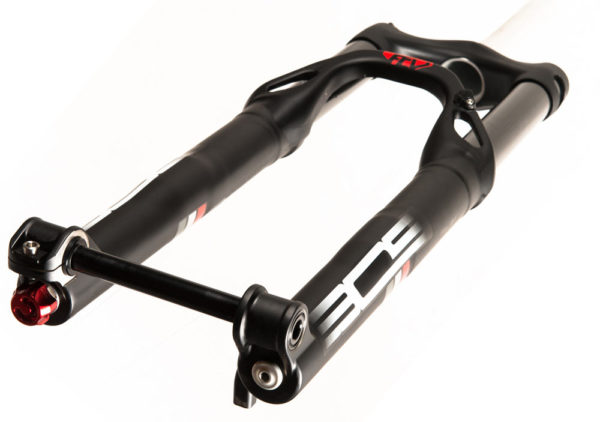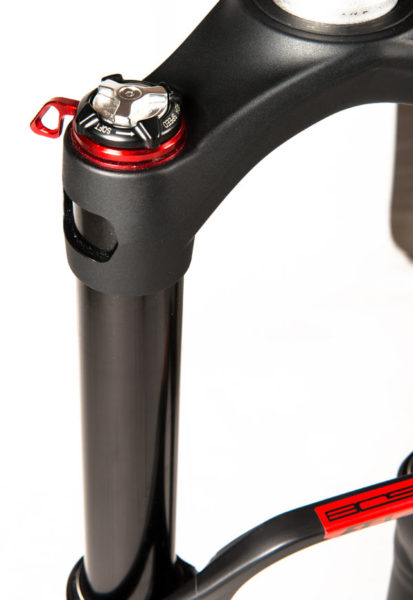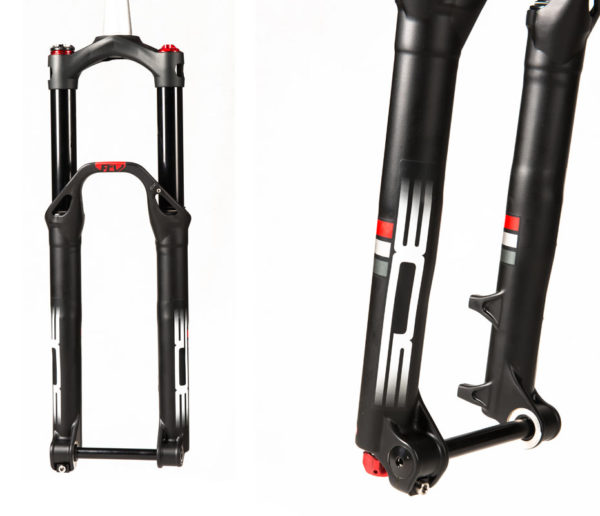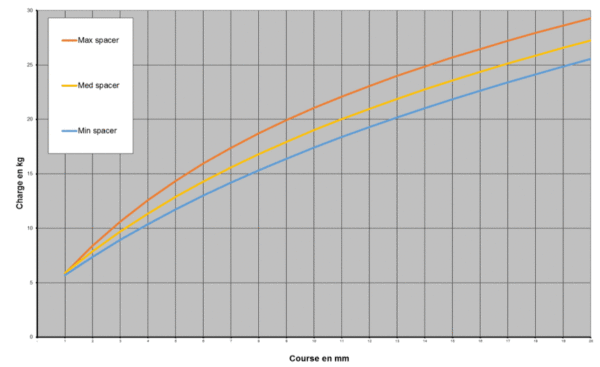Borrowing ever more from their motorsports division, the all-new BOS Deville gets a ton of new internal tech to handle the ups and downs of enduro racing, a new crown to make it stiffer, and optimized lowers to shave grams and, more importantly, make it stiffer.
The fork will offer external high and low speed compression and low speed rebound, but there’s a lot more adjustment available. A third lever up top creates platform, and air volume (but not what you expect) can be adjusted with spacers…
On top of the fork you’ll find three knobs. The silver one handles low speed compression, which is what you find on most forks these days. It works by compressing the spring that pushes a needle into the low speed flow orifice. More spring compression means it’s harder for oil flow to push the needle out of the way, which adds more damping to the system for slower low speed compression under normal ebbs and flows of rolling along. It also reduces sensitivity to the little stuff. Or open it up to make it react faster and feel more sensitive.
The black one under it handles high speed compression and works by raising or lowering the end position that the low speed needle can push back to. Lower the stop point and it can’t open as far under a big hit because oil flow is more limited, so the fork will feel harsher on big hits. Raise it and it lets the needle push back farther to open the port wider, softening the blow. There’s also a non-adjustable high speed compression shim stack in the system.
These two work in conjunction with a Frequency Control Valve (FCV) to inhibit rider-induced motion. Essentially, the FCV Mass appears to be an inertia-based piece that’s kept covering a flow port under soft movements (like those you’d place on the fork when standing to pedal), but then opens as soon as the lowers start moving from an impact. Sounds similar to the Brass Mass Fox used to have, but it’s located much higher up in the damping system here.
Lastly, there’s the Rapid Platform Adjustment Barrel, which is controlled by the red lever under the LSC/HSC knobs. This one opens or closes a port behind the compression needle, essentially blocking most of the oil flow and making the fork drastically firmer. Not fully locked, but very firm.
On the bottom is the low speed rebound adjustment knob, which works by moving a needle in or out of the return port…pretty much standard operation.
A few other things make this fork different than before…and different than most of what’s out there. First, there’s two methods of bottom out control – a hydraulic rebound stop that drastically slows the fork through the last 15mm of travel and helps provide mid-stroke support; and a foam bump stop using a special material that they say virtually eliminates any feeling of bottom out.
Second, it uses a pressurized damping cartridge that relies on a spring-backed piston to maintain oil pressure inside the system. SR Suntour has something similar in their Durolux R2C2 PCS cartridge, and it uses the spring in lieu of a fully sealed bladder system or nitrogen backed IFP like what’s typically found on rear shocks. And BOS’ system can be fully bled with minimal effort.
Third, there are negative air spring spacers. There’s been a lot of attention paid to increasing the size of the negative air spring in forks lately (Fox and Rockshox both announced such things just before Sea Otter), but this is the first time we’ve seen volume spacers for the negative air chamber. BOS offers three different spacer sizes, letting you fine tune the first third of travel without affecting the mid- and end-stroke like a positive air chamber spacer would. It’s a clever way of adding user-friendly tuning. To balance the air pressure between positive and negative, they’ve moved the check valve to the “zero” spot, so both chambers equalize when the fork is under no compression…you know, like when it’s leaning against your bike rack and you’re pumping it up. No more cycling it through its range to get the pressures set correctly.
The 27.5″ fork will come with 110mm Boost axles only, gets 35mm stanchions, and has travel options of 150mm, 160mm and 170mm. Should be available early summer.




